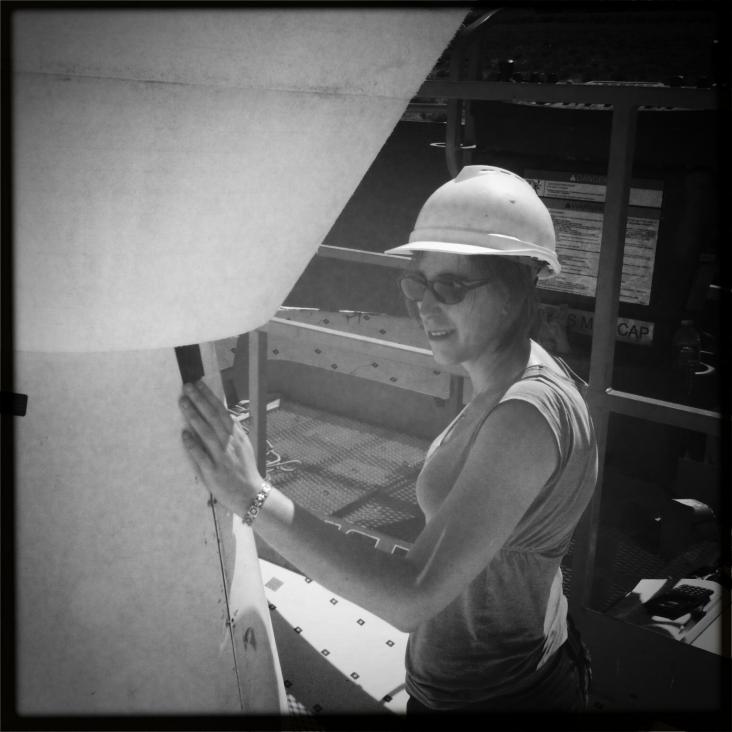The CℓOVER experiment
Proceedings of SPIE--the International Society for Optical Engineering SPIE, the international society for optics and photonics 7020 (2008) 70201e-70201e-10
Radio source calibration for the VSA and other CMB instruments at around 30 GHz
Monthly Notices of the Royal Astronomical Society Oxford University Press (OUP) (2008)
Abstract:
Accurate calibration of data is essential for the current generation of CMB experiments. Using data from the Very Small Array (VSA), we describe procedures which will lead to an accuracy of 1 percent or better for experiments such as the VSA and CBI. Particular attention is paid to the stability of the receiver systems, the quality of the site and frequent observations of reference sources. At 30 GHz the careful correction for atmospheric emission and absorption is shown to be essential for achieving 1 percent precision. The sources for which a 1 percent relative flux density calibration was achieved included Cas A, Cyg A, Tau A and NGC7027 and the planets Venus, Jupiter and Saturn. A flux density, or brightness temperature in the case of the planets, was derived at 33 GHz relative to Jupiter which was adopted as the fundamental calibrator. A spectral index at ~30 GHz is given for each. Cas A,Tau A, NGC7027 and Venus were examined for variability. Cas A was found to be decreasing at $0.394 \pm 0.019$ percent per year over the period March 2001 to August 2004. In the same period Tau A was decreasing at $0.22\pm 0.07$ percent per year. A survey of the published data showed that the planetary nebula NGC7027 decreased at $0.16\pm 0.04$ percent per year over the period 1967 to 2003. Venus showed an insignificant ($1.5 \pm 1.3$ percent) variation with Venusian illumination. The integrated polarization of Tau A at 33 GHz was found to be $7.8\pm 0.6$ percent at pa $ = 148^\circ \pm 3^\circ$.}Radio source calibration for the Very Small Array and other cosmic microwave background instruments at around 30 GHz
\mnras 388 (2008) 1775-1786
Detecting the B-mode Polarisation of the CMB with Clover
ArXiv 0805.3690 (2008)
Abstract:
We describe the objectives, design and predicted performance of Clover, which is a ground-based experiment to measure the faint ``B-mode'' polarisation pattern in the cosmic microwave background (CMB). To achieve this goal, clover will make polarimetric observations of approximately 1000 deg^2 of the sky in spectral bands centred on 97, 150 and 225 GHz. The observations will be made with a two-mirror compact range antenna fed by profiled corrugated horns. The telescope beam sizes for each band are 7.5, 5.5 and 5.5 arcmin, respectively. The polarisation of the sky will be measured with a rotating half-wave plate and stationary analyser, which will be an orthomode transducer. The sky coverage combined with the angular resolution will allow us to measure the angular power spectra between 20 < l < 1000. Each frequency band will employ 192 single polarisation, photon noise limited TES bolometers cooled to 100 mK. The background-limited sensitivity of these detector arrays will allow us to constrain the tensor-to-scalar ratio to 0.026 at 3sigma, assuming any polarised foreground signals can be subtracted with minimal degradation to the 150 GHz sensitivity. Systematic errors will be mitigated by modulating the polarisation of the sky signals with the rotating half-wave plate, fast azimuth scans and periodic telescope rotations about its boresight. The three spectral bands will be divided into two separate but nearly identical instruments - one for 97 GHz and another for 150 and 225 GHz. The two instruments will be sited on identical three-axis mounts in the Atacama Desert in Chile near Pampa la Bola. Observations are expected to begin in late 2009.Erratum: Source subtraction for the extended Very Small Array and 33-GHz source count estimates
\mnras 386 (2008) 1759-1760


